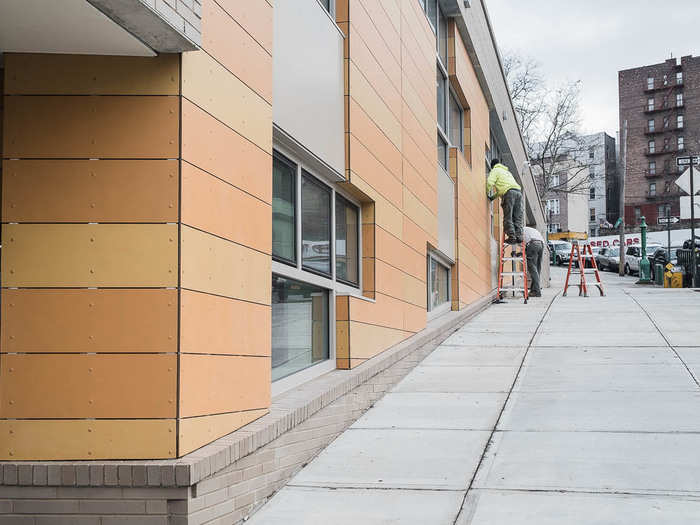


Source: DHS

The plan also calls for adding 15,000 units of housing with support services for those with mental health, substance abuse, and other issues.
The De Blasio administration announced earlier this week that the number of people living in city shelters stayed flat last year, which it sees as a victory for the plan.



A number of research studies have found Housing First to be more effective for alleviating homelessness for families experiencing temporary homelessness, for those suffering chronic homelessness, and even those with substance and mental health issues.
"The whole country is moving in that direction," Dennis Culhane, a professor at the University of Pennsylvania and a leading researcher on homelessness, told Business Insider.
Source: HUD

Rosenblatt said that he hopes that Landing Road and other facilities like it will eventually take pressure off the shelter system, giving the city the space to shrink the shelter system, get rid of poorly performing shelters, and focus on quality providers.
"The city likes to buy quality, but all they can afford to buy is quantity," he said. "If we can take some pressure off the system, the city is in a position to say to providers you need to compete. We're only going to keep the beds that give us the greatest bang for our buck."
Source: Coalition for the Homeless


Creating a facility like Landing Road requires a lot of upfront capital, which most nonprofits don't have. BRC was able to build Landing Road due to a stroke of good luck, according to Rosenblatt.
Several years ago, a developer bought out the nonprofit from a 25-year commercial lease on Manhattan's Lower East Side that provided enough funds for a down payment on the Landing Road property and the costly pre-development activities like zoning analysis and design that are the primary barriers to developing new projects.
But that was more or less a one time deal.



Those shelters, often called Safe Havens, have few rules around hygiene, curfew, or sobriety in order to use the shelter. Landing Road meanwhile has strict rules on those points, like the requirement that clients not stay in the dorms after a certain hour of the morning.

Source: Coalition for the Homeless



"If the last time you engaged with the shelter system was the '90s, your impression of what it can offer you is very different," he told Business Insider.
For decades, the city has relied on so-called "cluster sites," apartments rented out by the city at market rates or costly hotel rooms, to meet its demand for shelter. Those sites were often held in subpar buildings.
The Turning the Tide program called for eliminating the 360 cluster sites, of which 42% have since been closed.

"It is a purpose-built location with not-for-profit ownership. Those are qualities that we are encouraging our not-for-profit partners like BRC to pursue," said Banks.

"People have a right to hangout, but we don't want to make our clients' lives any more difficult. We thought why don't we just give them a space to hang out outside," Rosenblatt said.



"When I hear these types of institutional solutions, it's still living in a segregated, supervised program setting," she said.

"When I see all the money going into shelters, all I see is that money going into temporary solutions. When that same money could sustain a lot of families with rental subsidies and not have to live in a institutional environment," she said.

"It's about creating places of transformation," said Rosenblatt. "How do we use this opportunity to invest in people, achieve results, and do it in a way that's motivational and effective."
 I spent 2 weeks in India. A highlight was visiting a small mountain town so beautiful it didn't seem real.
I spent 2 weeks in India. A highlight was visiting a small mountain town so beautiful it didn't seem real.  I quit McKinsey after 1.5 years. I was making over $200k but my mental health was shattered.
I quit McKinsey after 1.5 years. I was making over $200k but my mental health was shattered. Some Tesla factory workers realized they were laid off when security scanned their badges and sent them back on shuttles, sources say
Some Tesla factory workers realized they were laid off when security scanned their badges and sent them back on shuttles, sources say Stock markets stage strong rebound after 4 days of slump; Sensex rallies 599 pts
Stock markets stage strong rebound after 4 days of slump; Sensex rallies 599 pts
 Sustainable Transportation Alternatives
Sustainable Transportation Alternatives
 10 Foods you should avoid eating when in stress
10 Foods you should avoid eating when in stress

Copyright © 2024. Times Internet Limited. All rights reserved.For reprint rights. Times Syndication Service.